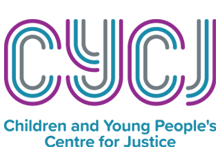Our latest guest blog post, written by Daniela Rodriguez, MSc Criminology and Criminal Justice student at the University of Edinburgh, explores the impact and influence of depictions of youth crime in the media, and how this subsequently affects practitioners’ work with vulnerable youths.
Public perceptions of youth offending regard juveniles as becoming increasingly violent (Hough and Roberts, 2012). However, this is in contrast to the crime rates that show that violence is not a new or rising issue in Scotland (McAra and McVie, 2010). These perceptions can influence the political and societal mood towards young people, resulting in a punitive environment, regardless of its ineffectiveness. Consequently, understanding young people is essential if we are to make better decisions and improve outcomes. The media is recognized as one of the main sources of public information about youth crime, however it has also been criticized as biased and stigmatizing. In contrast, practitioners’ knowledge is based on their experience. Therefore, it is relevant to compare how young offenders are perceived, by those informing the community and by those who work with them.
Newspapers portrayals were analysed from four sources: the Evening News, the Herald, the Scotsman and the Sun. Generally, young offenders were presented as disrespectful, remorseless, unchangeable, violent, expensive for the system, and responsible for a great amount of crime. However, a closer analysis reflects that the first three newspapers also mention elements that balance that negative image. For example, they recognise that offenders form only a small group. Regarding the causes of criminal behaviour, newspapers refer mostly to individual and opportunistic interests, although families, peers, poverty, the neighbourhood, substance misuse, mental health and lack of education may also be involved.
The measures mentioned in the media to tackle youth offending were: the increase of security and surveillance, custody for serious offenders to guarantee public protection, and the development of strict disciplinary conditions. Thus, tough approaches are encouraged. Nevertheless, custody is recognised as ineffective and rehabilitation under a multiagency paradigm is encouraged. Moreover, training was claimed as significant in providing employment opportunities, and the role of the community was admitted as relevant.
In contrast, practitioners’ view of young offenders was addressed through interviews of seven professionals from academic, statutory social work or third sector organizations in both Edinburgh and Glasgow. The interviewees identified young offenders as unique, resourceful and resilient people, who can learn and change. Thus a positive image dominates the discourse. Youth offending is understood as a result of vulnerability, experiences of trauma and abuse, deprivation, lack of stability and nurturing, and low self-esteem. Practitioners consider the role of the community as central, because its rejection reduces the chances of positive socialization and integration.
Practitioners’ work involves promoting prevention and non-stigmatising attitudes towards young people, to develop individual plans and indicators specific to each young person, while also generating knowledge to explain the broad phenomena of youth crime. To improve this situation practitioners highlighted the relevance of early detection, tailored intervention, the prioritization of diversion, a multidisciplinary approach and partnerships with other institutions. The intention is to generate new personal expectation in juveniles, including developing progressive responsibility in pro-social activities. Following this line, all interviewees cited punishment as ineffective and counterproductive.
According to the interviewees, their main tool is the relationship they can construct with young people. This relationship should be based on support, honesty, respect for the young person’s perspective, hope, good communication, and consistency. The purpose is to improve juveniles’ self-esteem, establish boundaries and support desistance processes. In order to do this, practitioners need communication skills, resilience, to show interest, and to adapt to the young person. However, success is challenged by many issues, which can be influenced by media messages. Media ‘labels’ impact on the expectations of young people, their views of themselves and the reaction of the community towards them, provoking emotions such as anger and reactions such as isolation.
In conclusion, media images of young people have influenced the marginalization of juveniles in trouble. This impacts on the main tool of practitioners; the relationship they form with the young people and families they work with. Nevertheless, newspapers appear to be developing a more ambivalent view of young offenders. This seems to be a progressive change, which could have a positive impact – if media portrayals become more informative and balanced, it could lead to better recognition of young offenders’ needs and vulnerabilities. Moreover, by spreading the knowledge of more effective approaches, the structural elements related to youth offending could be addressed.
References:
Hough, M. and Roberts, J. (2012) Public opinion, crime, and criminal justice. In Maguire, M., Morgan, R. and Reiner, R. (eds.) The Oxford handbook of Criminology (5th ed.). Oxford: Oxford University Press.
McAra, L. and McVie, S. (2010) Youth crime and justice in Scotland. In Croall, H., Mooney, G. and Munro, M. (eds.) Criminal justice in Scotland. Cullopmton: Willan.

Leave a Reply
You must be logged in to post a comment.